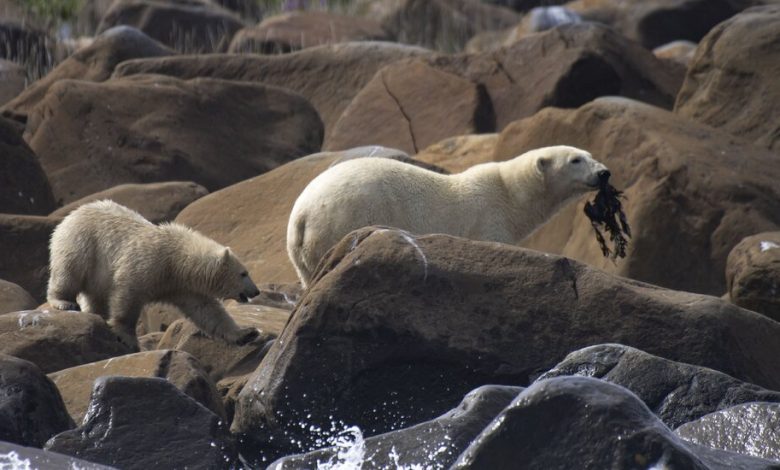Is That Polar Bear Getting Enough to Eat? Try a Collar With a Camera.

Climate change is stretching the length of time parts of the Far North go without sea ice, which polar bears rely on to hunt their preferred prey: blubbery, calorie-rich seals. When the ice melts in summer, the bears move onto land and face two options. They can rest and slow down to a state approaching hibernation, or they can forage for alternative food like berries, bird eggs and small land animals.
Scientists tracking 20 polar bears in Manitoba, below the Arctic Circle at the southern end of the animals’ range, found that the option the polar bears chose didn’t make much difference. Bears who foraged generally got just enough calories from their small meals to replenish the energy they spent finding them, but not enough to maintain their body mass.
“Terrestrial foods are not adequate to prolong the period that polar bears can survive on land,” said Anthony Pagano, a wildlife biologist at the U.S. Geological Survey and the lead author of a study based on the research, published on Tuesday in Nature Communications.
In western Hudson Bay, the ice-free period is three weeks longer now than it was in the 1970s, and polar bears currently spend about 130 days on land during the year. Scientists estimate that, going forward, there will be five to 10 more days without sea ice each decade.
The question of whether polar bears can survive for longer periods on land has been politicized at times as the creatures became a symbol of climate change.
A 2015 assessment by the International Union for the Conservation of Nature found a high probability of the global polar bear population declining by more than 30 percent by 2050. This local population in Hudson Bay may have shrunk by half already, from an estimated 1,200 bears in the 1980s to about 600 bears in 2021.
We are having trouble retrieving the article content.
Please enable JavaScript in your browser settings.
Thank you for your patience while we verify access. If you are in Reader mode please exit and log into your Times account, or subscribe for all of The Times.
Thank you for your patience while we verify access.
Already a subscriber? Log in.
Want all of The Times? Subscribe.




